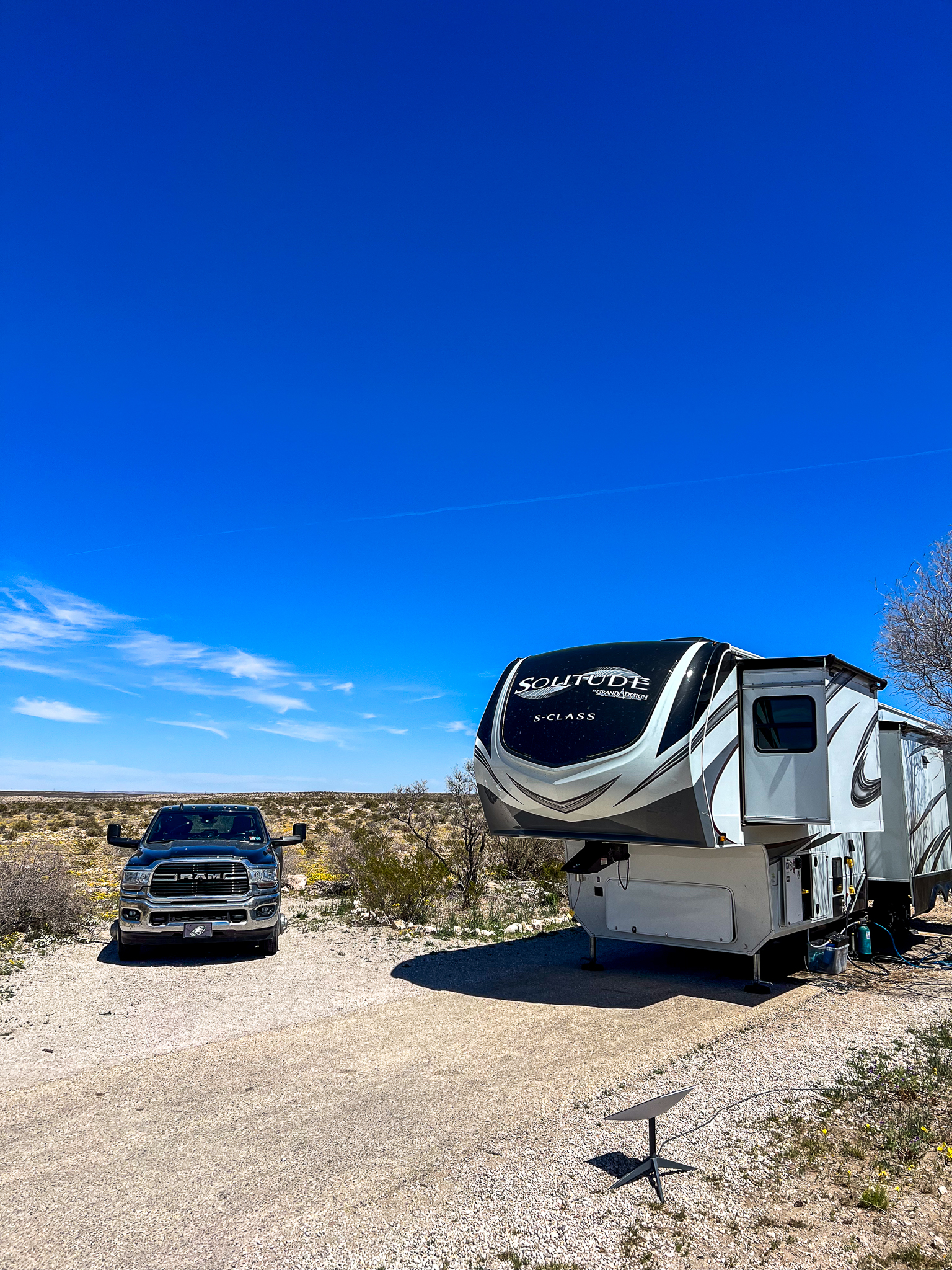📌 Table of Contents
- Introduction
- What Is an RV Loan?
- Types of RV Loans
- RV Loan Requirements
- Financing With Good Credit
- Financing With Bad Credit
- Weekend Warrior RV Loans
- Full-Time RV Loans
- What to Consider Before Financing
- Final Thoughts
Thinking About Financing Your RV? Start Here.
Whether you’re dreaming of weekend getaways in a travel trailer or planning to hit the road full-time in a Class A motorhome, one thing is almost always true: RVs aren’t cheap and most buyers don’t pay in cash.
That’s where RV financing comes in.
With new RVs ranging anywhere from $15,000 to over $300,000 (and used RVs only slightly more affordable), financing has become a common and often necessary part of the buying process. But RV loans work a little differently than car loans, home loans, or personal loans — and understanding those differences is key to getting the best deal for your lifestyle and your budget.
And let’s be honest, figuring out the ins and outs of RV loans can feel overwhelming. Do you need great credit to qualify? What if you’re buying a small camper? What if you’re planning to live in your RV full-time? Is it better to finance through a dealer or a credit union?
Don’t worry, we’ve got you.
This guide breaks down everything you need to know about RV loans and financing, whether you’re:
- A weekend warrior buying your first pop-up camper
- A bad credit borrower trying to qualify for a loan with limited options
- A full-time traveler needing a loan for a toy hauler you’ll live in year-round
- A first-timer just trying to understand what’s realistic before walking into a dealership
We’ll walk you through the different types of RV loans, how credit scores affect your options, how to shop smart based on your needs, and where to find the best financing for your specific situation, whether it’s a $10,000 trailer or a $200,000 luxury rig.
💡 RV life is all about freedom — and the right financing can help you get there faster (without wrecking your finances along the way).
Let’s dive in!
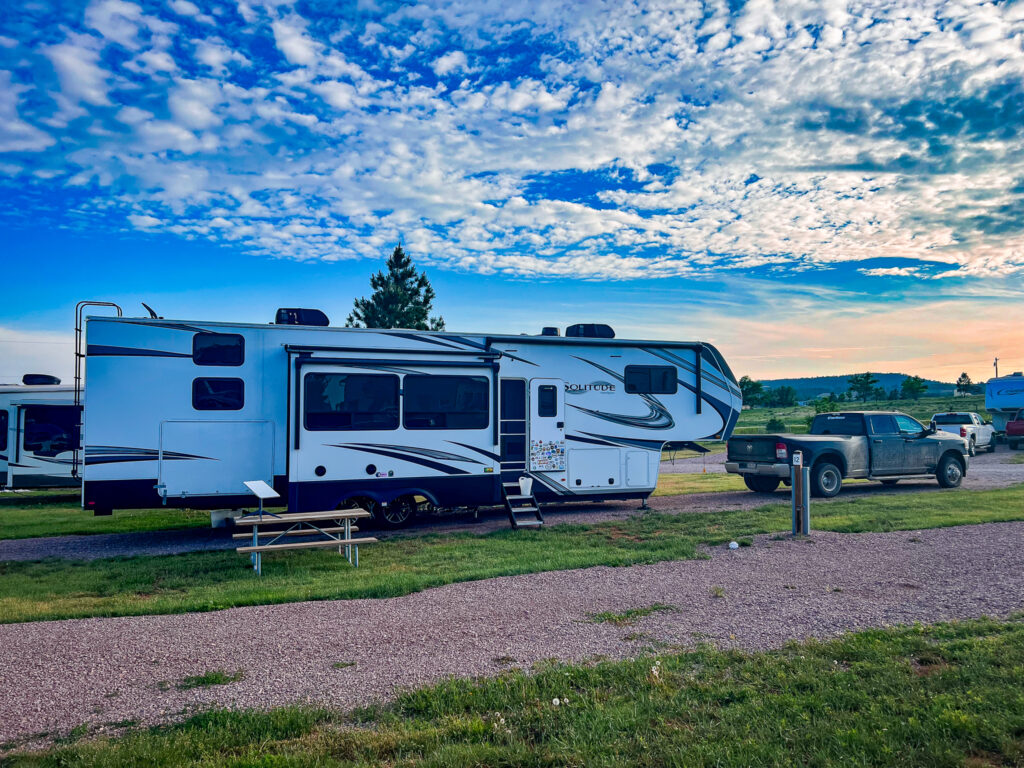
What Is an RV Loan?
An RV loan is a type of financing specifically designed to help you purchase a recreational vehicle, whether that’s a small camper, a fifth wheel, a travel trailer, a toy hauler, or a drivable Class A, B, or C motorhome.
In simple terms, it’s like a car loan or home loan; you borrow money from a lender to pay for the RV upfront, and then pay it back over time with interest.
But RV loans have their own unique quirks. They often involve larger amounts, longer terms, and more detailed approvals, especially if you’re buying a high-end motorhome or planning to live in your RV full-time.
Secured vs. Unsecured RV Loans
There are two main types of RV loans:
Secured RV Loans
- The most common type of RV financing.
- The RV itself is used as collateral, meaning if you default on the loan, the lender can repossess it.
- Typically offers lower interest rates and longer repayment terms (often 10–20 years).
- Available through banks, credit unions, RV dealerships, and specialized lenders.
Unsecured RV Loans
- These are personal loans that don’t use the RV as collateral.
- Usually for smaller loan amounts (under $25,000) or for RVs that are older or don’t meet lender guidelines.
- Higher interest rates and shorter repayment periods (usually 3–7 years).
- May be easier to qualify for with lower credit scores or minimal paperwork but more expensive in the long run.
Typical RV Loan Term
RV loans generally come with longer terms than car loans which can be a double-edged sword. On one hand, longer terms mean lower monthly payments, but on the other, they also mean more interest paid over time.
- Loan amounts: $5,000 to $500,000+
- Loan terms: 5 to 20 years
- Interest rates (2025): ~6.5%–10%+ depending on credit, down payment, and loan type
💡 Pro Tip: Just because you qualify for a 20-year loan doesn’t mean you should take one. Always look at the total cost of the loan — not just the monthly payment.
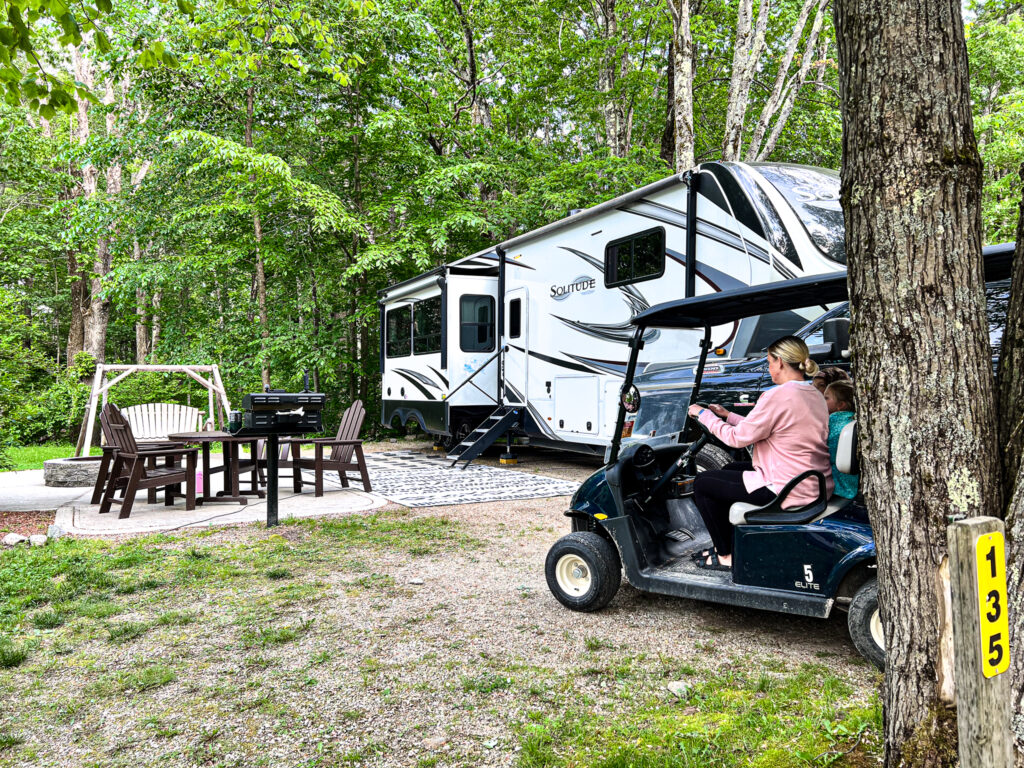
How RV Loans Are Different From Car Loans
- RVs depreciate faster than cars so lenders may be more cautious
- RVs can also be used as a residence, which can change how lenders view your risk
- Loan applications often ask for more documentation: income verification, RV type, usage (full-time vs recreational), and insurance proof
RV loans are a great tool to help you afford your dream rig but choosing the right type, term, and lender can make a big difference in how smooth (and affordable) your journey is.
Types of RV Loans
When you’re shopping for an RV loan, it’s important to know that not all financing options are created equal. Your credit score, the type of RV you’re buying, how old it is, who you’re buying it from, and even how you plan to use it (weekend camping vs. full-time living) can all affect what kind of loan you’ll qualify for.
Let’s walk through the most common types of RV loans and how to know which one’s right for you.
New RV Loans
These loans are designed for brand-new RVs purchased from a dealership.
- Typically offer the lowest interest rates and longest terms (up to 20 years).
- Require good to excellent credit and a 10–20% down payment.
- Great for buyers looking at Class A motorhomes, new travel trailers, or high-end fifth wheels.
- RV serves as collateral — secured loan.
💡 Tip: Just because it’s new doesn’t mean it’s worth the asking price. Always research depreciation and actual resale value.
Used RV Loans
For RVs purchased from a private seller or dealership, but not brand new.
- Slightly higher interest rates than new RV loans.
- Shorter loan terms (5–15 years) depending on RV age and lender.
- Lenders may have age or mileage restrictions (often won’t finance RVs older than 10–15 years).
- Can be a great way to save money if the RV is well-maintained.
🧠 Make sure to get the RV professionally inspected before financing — most lenders don’t require it, but you’ll want peace of mind.
RV Refinance Loans
Already own an RV with a high interest rate or monthly payment? Refinancing lets you restructure your loan.
- You may be able to lower your monthly payment or reduce interest if your credit has improved.
- Also useful to shorten or extend your loan term.
- Often available from credit unions or online RV finance specialists.
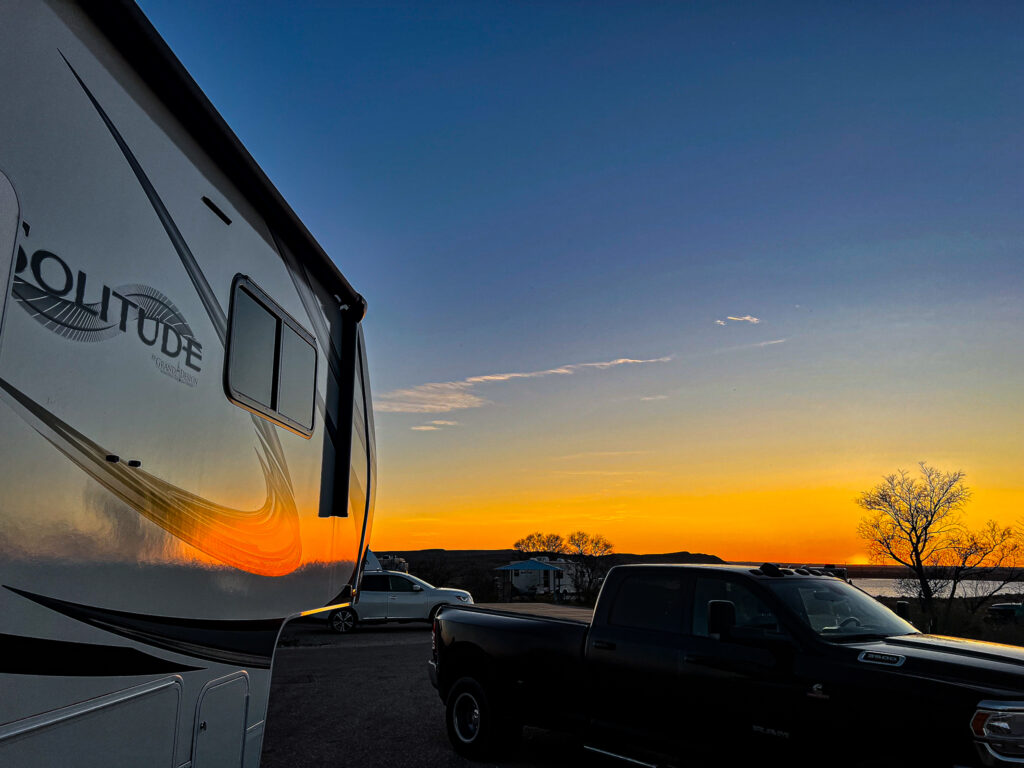
Private Party Purchase Loans
Buying from an individual seller instead of a dealer? You can still get financing, but it requires a private party loan.
- Typically requires a secured loan (RV becomes collateral).
- May involve more paperwork (title checks, inspections, insurance verification).
- Some banks and credit unions specialize in private party loans for RVs, boats, and other large purchases.
Unsecured Personal Loans for RVs
For smaller purchases (often under $25,000), you may qualify for a personal loan instead of an RV-specific loan.
- No collateral required (unsecured loan).
- Faster approval and funding (sometimes same-day).
- Shorter terms (2–7 years) and higher interest rates, especially with fair/poor credit.
- Good option for small campers, vintage trailers, or pop-up campers.
RV Loans for Full-Time Living
Some lenders offer special programs or add-ons for full-time RVers. These may include:
- “Full-timer” clauses that allow for legal domicile use
- Proof of insurance and consistent income required
- May be considered more risky by some lenders, so expect additional verification steps
Understanding the type of RV loan that fits your situation is the first step toward getting the keys to your next adventure. Whether you’re buying new or used, from a dealership or a private seller, or even refinancing, there’s an option for just about every RVer.
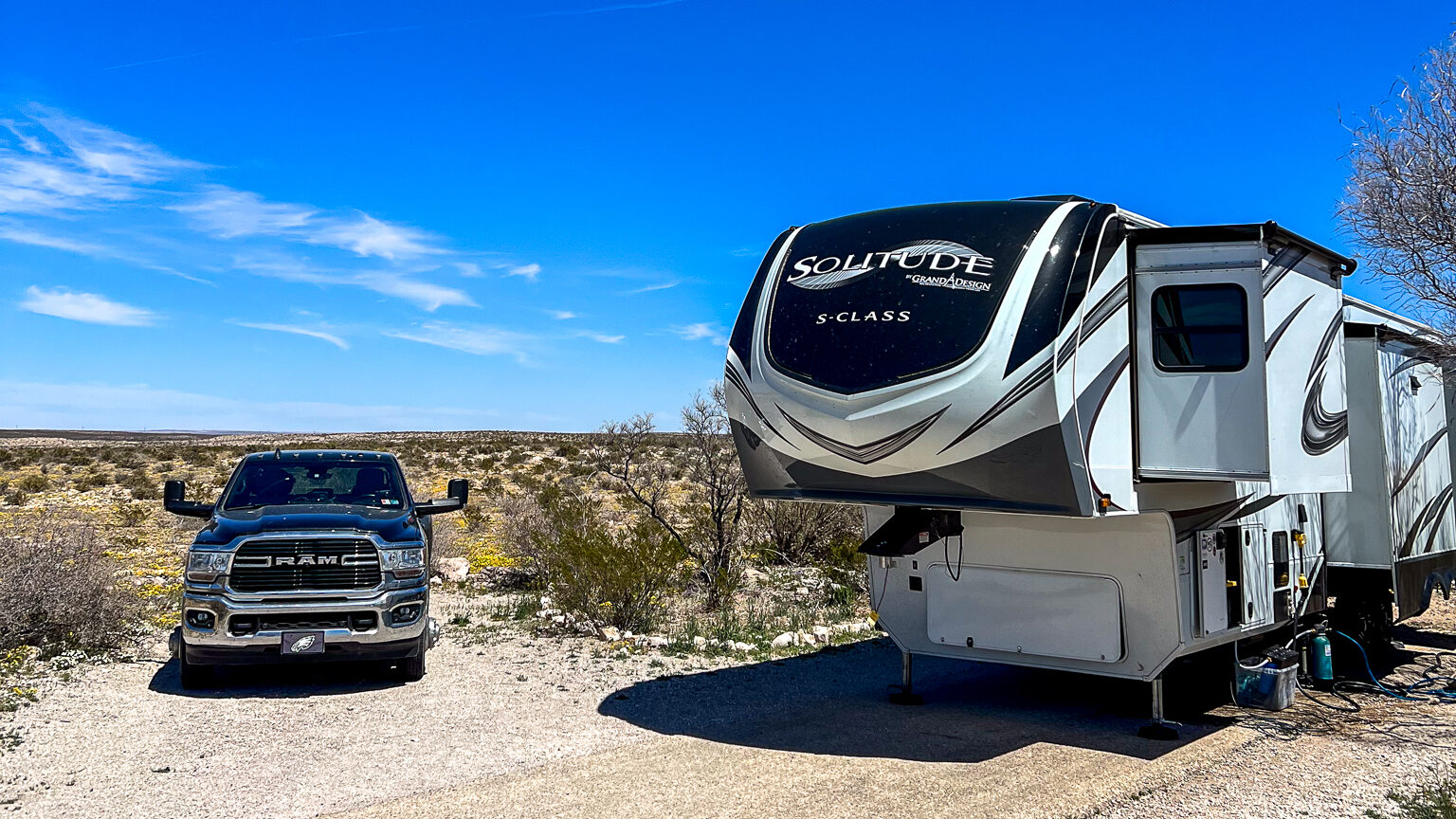
RV Loan Requirements: What You Need to Qualify
Whether you’re financing a $10,000 pop-up camper or a $200,000 motorhome, lenders want to make sure you’re a responsible borrower and that the RV itself is worth financing. While requirements vary slightly between banks, credit unions, and online lenders, there are some standard things almost every lender will look for when you apply for an RV loan.
Let’s break it down:
Credit Score
Your credit score plays a big role in determining:
- Whether you qualify
- What interest rate you’re offered
- How much you’ll need to put down
Here’s a general guide:
| Credit Score Range | What to Expect |
|---|---|
| 750+ (Excellent) | Best rates, longest terms, lowest down payment |
| 700–749 (Good) | Great approval odds, competitive rates |
| 650–699 (Fair) | Still eligible, but may see higher rates |
| 600–649 (Poor) | Limited lender options, higher rates, larger down payment |
| Below 600 | Very few approvals — will likely need a co-signer or secured personal loan |
💡 Even a small credit score improvement (like going from 680 to 700) can save you thousands in interest over the life of your loan.
Down Payment
Most RV lenders require 10%–20% down, especially on new or higher-priced units.
- For excellent credit, some lenders may offer low or zero-down promotions through RV dealerships.
- With bad or fair credit, expect to pay more up front, sometimes 25% or higher, to reduce lender risk.
💡 A bigger down payment can also help you qualify for better terms and reduce your monthly payment.
Proof of Income
You’ll need to prove you can afford the loan. Expect to provide:
- Recent pay stubs or tax returns (especially if self-employed)
- Proof of consistent income (some lenders want 2+ years of work history)
- Debt-to-income ratio under 45% is usually ideal
🧠 Full-time RVers may need to show alternative forms of income like retirement, remote work, or rental income.
The RV Must Qualify Too
It’s not just about your finances — the RV also needs to meet certain criteria.
Most lenders require:
- RV must be less than 10–15 years old (for used loans)
- Must be in good condition (some ask for inspection reports)
- Must be self-contained if full-time use is planned
- Title must be clean, no salvage titles or major structural damage
Some lenders won’t finance:
- Homemade campers or school bus conversions (aka skoolies)
- Vintage campers or trailers without titles
- Park models, unless used as a stationary dwelling
Other Documentation You May Need
Depending on the lender, you may be asked for:
- A bill of sale or purchase agreement
- Driver’s license or proof of residence
- Insurance quote (many lenders require proof before final approval)
- A filled-out RV loan application with VIN, mileage, and details
Special Note for Full-Time RVers
If you plan to live in your RV full-time:
- Some lenders may require additional proof of domicile (mail forwarding, legal address)
- You’ll likely need full-time RV insurance, not just recreational coverage
- Be prepared to explain your lifestyle and show reliable income
💡 Not all lenders finance full-time use, so be upfront during pre-qualification to avoid surprises.
Knowing what to expect before you apply can help you gather documents, avoid delays, and shop with confidence. Whether you’re going big or starting small, being prepared is the first step to getting approved.
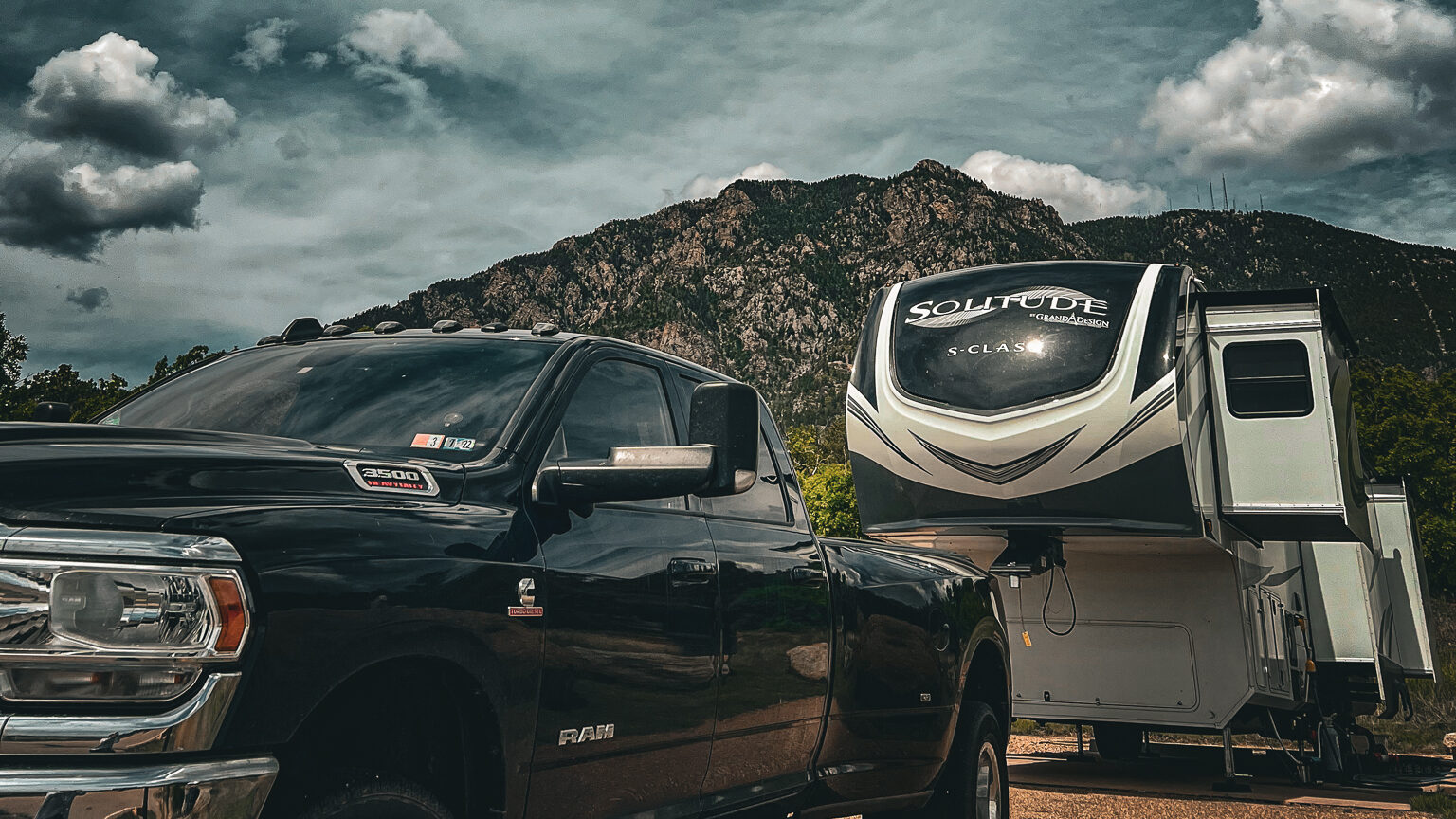
Financing an RV With Good Credit
If you have a credit score of 700 or higher, you’re in a strong position when it comes to RV financing. Lenders view you as low-risk, which means you’ll have access to better interest rates, longer loan terms, and more flexible approval requirements.
Here’s how to make the most of that good credit:
Get the Best Possible Rates
- As of 2025, top-tier borrowers can expect rates in the 6.5%–7.5% range, depending on the lender, loan term, and RV type.
- Some credit unions and online banks may even offer promotional financing as low as 5.99%, especially for new RVs.
💡 A difference of just 1% in interest could save you thousands over the life of the loan.
Pre-Approval = Leverage
Before stepping into a dealership or making an offer:
- Get pre-approved with a few lenders.
- Compare rates, terms, and fees (don’t just go with the first offer).
- Use your pre-approval to negotiate better pricing both on the loan and the RV.
🧠 Many dealerships mark up financing so having a third-party pre-approval gives you control.
Take Advantage of Longer Terms
With good credit, lenders are often willing to offer extended terms (up to 15–20 years) especially on larger loan amounts ($50,000+). This keeps monthly payments low and affordable.
Just be cautious:
- Longer terms = more interest over time
- Consider choosing a longer term, but making extra payments to save on interest
Less Down, More Options
Many lenders will let borrowers with good credit:
- Put less money down (sometimes as little as 5%)
- Finance newer or more expensive RVs
- Access exclusive dealer promotions and rate discounts
That said, putting down 10–20% still helps reduce your monthly payment and can eliminate private lender fees.
Good credit opens doors — and when used wisely, it can help you score a great RV loan without overpaying. The key is not just to get approved, but to get the right loan for your financial future.
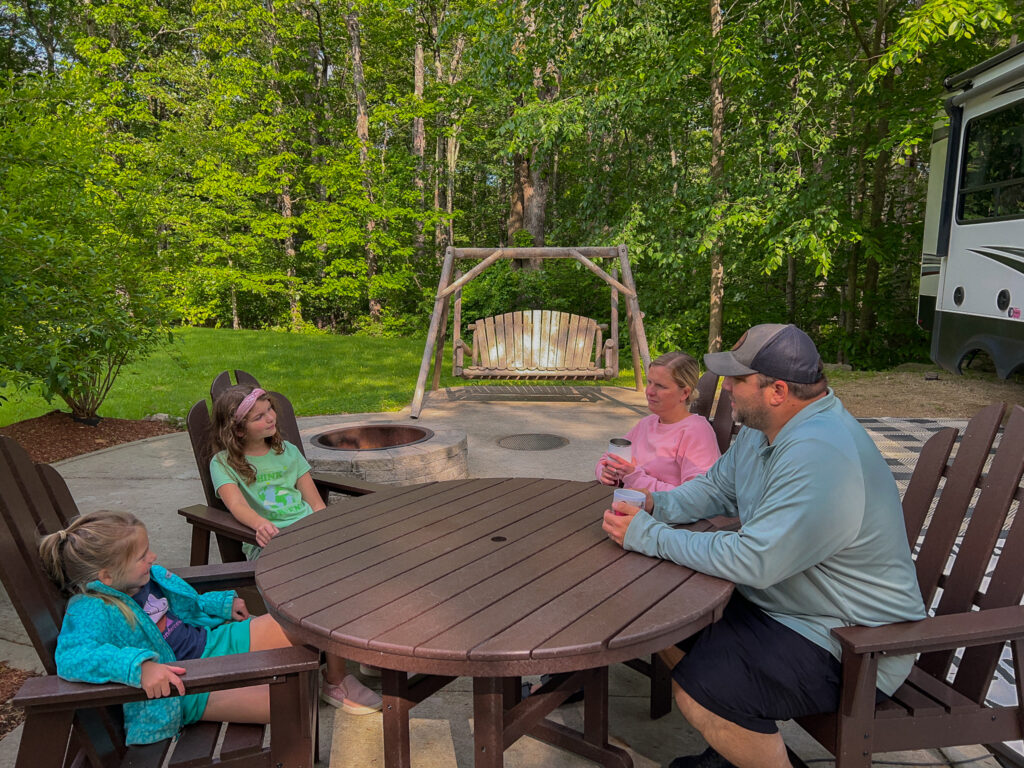
Financing an RV With Bad Credit
If your credit score is below 650, getting an RV loan might feel like an uphill battle — but don’t count yourself out. Plenty of RVers with fair or poor credit finance campers, travel trailers, and even motorhomes every year. It just takes the right strategy, some realistic expectations, and a little patience.
What to Expect With Bad Credit
While you may still qualify for an RV loan, here’s how things typically change:
- Higher interest rates (often 10%–17%+)
- Shorter loan terms (5–10 years vs. 15–20)
- Larger down payments required (20%+ in many cases)
- Fewer lender options, often through subprime lenders or credit unions
💡 Tip: Even with a higher interest rate, financing a small or used RV can still be manageable if you choose wisely and budget well.
Steps to Improve Your Odds of Approval
1. Make a Bigger Down Payment
Putting down more shows lenders you’re serious and reduces their risk which improves your chance of approval and may even help secure a slightly better rate.
2. Stick to a Smaller, More Affordable RV
Lenders are more willing to finance $10k–$25k units with bad credit than $100k motorhomes.
Start small, you can always upgrade later.
3. Consider a Co-Signer
If someone with better credit is willing to co-sign, you can often:
- Qualify more easily
- Secure a lower interest rate
- Get better loan terms overall
Just remember: they’re legally responsible if you miss payments.
4. Work With the Right Lender
Some lenders specialize in working with lower-credit borrowers, including:
- Credit unions (especially local ones)
- Online lenders like My Financing USA
- In-house RV financing at dealerships (but be cautious of inflated rates)
Watch Out for Predatory Lending
If you’re financing with poor credit, read the fine print carefully. Avoid:
- Loans with extremely high APRs (20%+)
- Hidden fees, prepayment penalties, or forced warranty add-ons
- Dealers who only work with “buy here, pay here” models with unclear terms
🧠 If it sounds too good to be true — or too confusing to understand — walk away.
Improve Your Credit First (If You Can Wait)
If you’re not in a rush to buy, consider spending 3–6 months improving your credit. Even a 20–30 point bump can significantly lower your interest rate.
- Pay down credit card balances
- Dispute errors on your credit report
- Make all payments on time
- Avoid new hard inquiries unless necessary
💡 Some lenders will re-pull your credit after 30–60 days if you request it and your improved score could qualify you for a better rate.
Start Smart, Build Up
Many RVers with bad credit choose to:
- Start with a small travel trailer or camper
- Make on-time payments for 12–18 months
- Then refinance at a better rate once their credit improves
This builds payment history, proves your reliability to lenders, and makes future upgrades easier.
💡 Financing with bad credit is absolutely possible you just have to be smart, shop carefully, and stay realistic about what fits your budget.
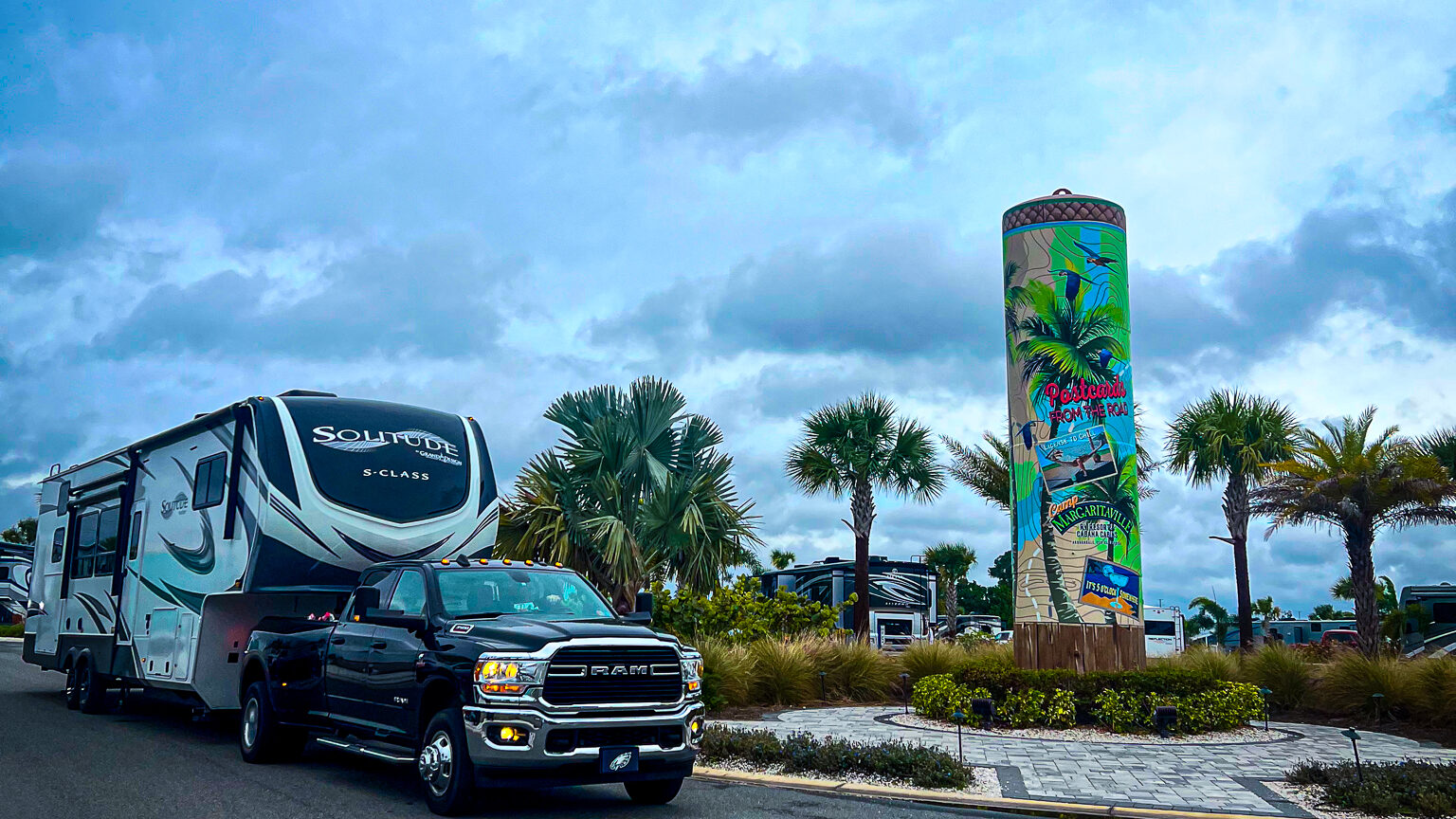
Weekend Warrior RV Loans
Not everyone’s looking to live in an RV full-time — and if your goal is to get out of town on weekends, explore nearby campgrounds, or enjoy a few summer road trips a year, the good news is: financing a recreational-use RV is typically easier and more flexible.
These are often smaller RVs, like:
- Travel trailers
- Pop-up campers
- Teardrops
- Toy haulers
- Lightweight towables
Why These Loans Are Easier to Get
- Lower loan amounts (often under $40,000) make approvals easier
- Lenders see less risk when RVs are used occasionally
- More options for shorter terms, smaller down payments, or unsecured loans
Loan Options for Weekend Campers
- Secured RV Loans for newer towables from dealerships
- Personal Loans for used trailers or older rigs (especially under $20K)
- Credit Union Financing for competitive weekend-use programs
- Dealer Specials on entry-level trailers with 5–10 year terms
💡 Many weekend RVers can finance a camper for the same monthly cost as a couple nights at a hotel.
Pro Tips
- Stick with newer models if you want the best rates
- Have a tow vehicle rated for your camper to avoid loan delays
- Consider a shorter term loan and pay extra to save on interest
Full-Time RV Loans
Financing an RV you plan to live in full-time can be a little more complicated, but it’s completely doable with the right lender and documentation. Some lenders treat full-time RVers more like mortgage applicants, since the RV will function as your primary residence.
What Makes Full-Time RV Loans Different?
- You’ll need to declare the RV as your primary residence
- May need proof of domicile (mail-forwarding address, insurance, etc.)
- Full-time RV insurance is often required before closing
- Some lenders may ask for a higher credit score or larger down payment
Be honest about your full-time use — lenders may deny a claim later if you misrepresent how the RV will be used.
Extra Requirements for Full-Timers
- Proof of consistent income (pay stubs, 1099s, retirement income, etc.)
- Proof of mailing address (via mail service, friend’s address, etc.)
- Full-time RV insurance policy
- Possibly higher liability or coverage minimums
Best Tips for Full-Time RV Loans
- Look for lenders who explicitly finance primary-residence RVs
- Get pre-approved before shopping
- Secure your mail-forwarding setup and insurance ahead of time
- Know your budget — remember, this is your “home” now, so plan for ongoing costs (repairs, travel, RV park fees, insurance, etc.)
💡 Financing an RV for full-time living isn’t that different — it just requires a bit more paperwork, and a lender that understands your lifestyle.
Smart Financing Tips:
- Shorter terms = less interest, so avoid 10+ year loans on small campers
- Check for prepayment penalties — then pay it off early if possible
- Consider buying used and paying cash if your credit is poor — then upgrade later
Whether you’re starting small or going all-in on a luxury rig, the right financing can make your RV dreams a reality — without putting unnecessary strain on your finances.
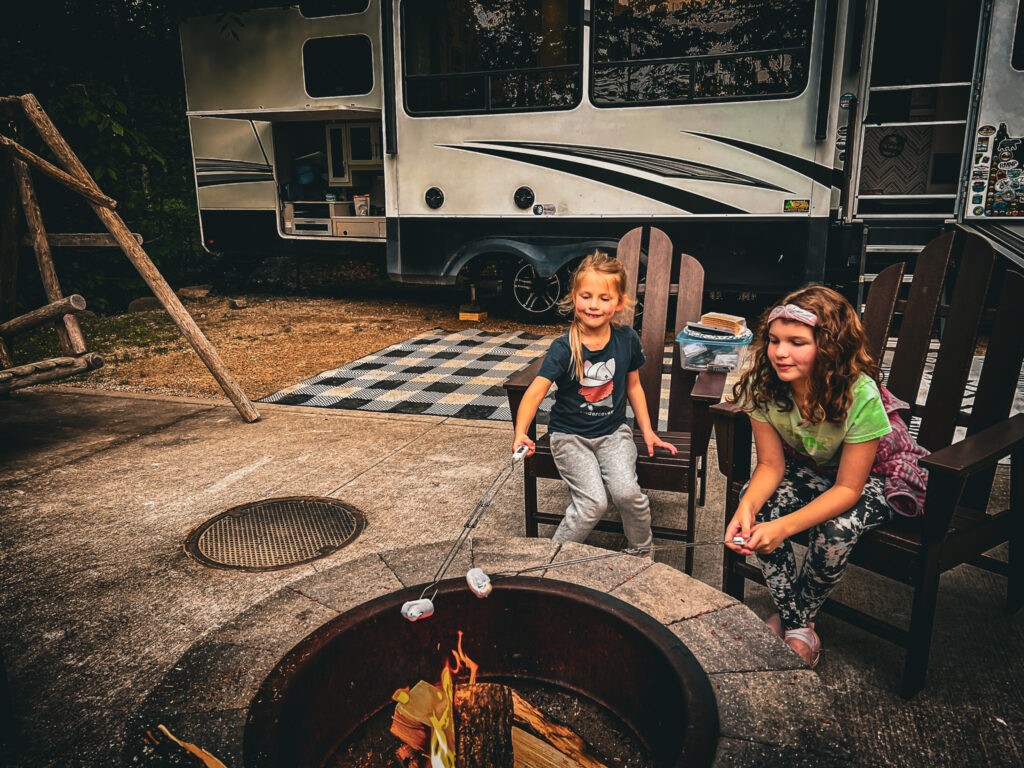
What to Consider Before Financing an RV
Financing an RV can be a smart move, but before you sign on the dotted line, it’s important to think beyond just the monthly payment. Buying an RV is a major financial decision, and there are a few things you’ll want to understand to avoid regrets down the road.
Here’s what to consider before committing to an RV loan:
Total Cost of Ownership (Not Just the Loan)
The sticker price of the RV is just the beginning. Your actual cost of ownership includes:
- Interest paid over the life of the loan
- Taxes, title, and registration fees
- Insurance (especially if full-time or financing a luxury RV)
- Maintenance and repairs
- Storage fees (if not parked at home)
- Fuel and campground stays
💡 Tip: Always calculate the “all-in” monthly cost — not just your loan payment — before buying.
New vs. Used RVs
New RVs offer the latest features and warranties, but they depreciate quickly…. often 20–30% in the first year.
Used RVs:
- Are significantly cheaper upfront
- Hold their value better (after the initial depreciation hit)
- May come with surprises if not inspected properly
🧠 If budget is tight or you plan to upgrade later, used is often the smarter play.
Loan Term Length
Yes, a 15–20 year term lowers your monthly payment but it also means:
- Paying more interest over time
- Staying “upside-down” on your loan longer (owing more than it’s worth)
If you can afford a shorter loan term, you’ll save money in the long run and build equity faster.
Read the Fine Print
Before you sign anything, check for:
- Prepayment penalties
- Balloon payments at the end of the term
- Loan origination fees or dealer add-ons
- Any requirements for insurance, inspections, or collateral
💡 Ask questions and don’t be afraid to walk away if something feels off.
Compare Multiple Lenders
Never take the first offer — especially if it’s coming from a dealership. Shop around and get pre-approved from:
- Your local credit union
- A few online lenders
- Any banks you already have a relationship with
🧠 Even a 1–2% difference in interest can mean thousands saved over time.
Don’t Overbuy
It’s easy to fall in love with that massive fifth wheel or luxury Class A… but if it pushes your monthly budget or limits your travel freedom, it may not be worth it.
Ask yourself:
- Can I tow or drive it confidently?
- Can I comfortably afford the monthly costs?
- Will I actually use all those features?
💡 Buy the RV that fits your lifestyle, not just the one that looks impressive.
Plan for Depreciation
RVs are not investments, which means they lose value, fast.
Unless you’re buying a collectible or vintage unit, expect to lose:
- ~20% in the first year
- ~30–40% within 5 years
🧠 Make sure you’re okay with being “upside down” on the loan in the early years, especially if you finance 100%.
Financing can be a great tool — but it works best when paired with smart planning, realistic expectations, and a clear understanding of what you’re getting into.
Here’s your closing section — a warm, confident wrap-up that reassures readers and leaves them feeling informed and empowered:
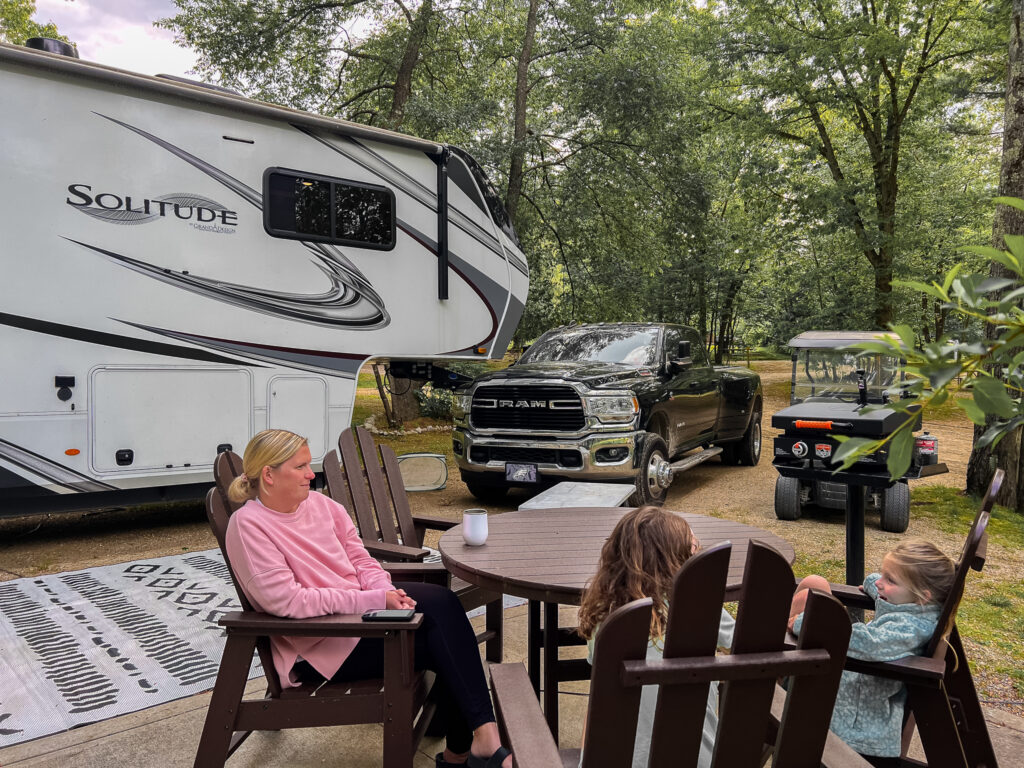
Final Thoughts: RV Financing Doesn’t Have to Be Overwhelming
Whether you’re buying your first towable trailer, upgrading to a luxury rig, or chasing full-time RV life, figuring out how to finance your RV is one of the biggest steps you’ll take — and one of the most important.
The good news? You don’t need perfect credit or deep pockets to make it happen. From small camper loans to full-time motorhome financing, there are options for nearly every budget, lifestyle, and credit profile.
Here’s what matters most:
- Know your numbers — not just the loan amount, but the total monthly costs.
- Choose a realistic RV that fits your needs, not just your wishlist.
- Shop around for the best rates, and don’t be afraid to ask questions or walk away.
- Plan for the long haul — and be ready to pivot if your needs change.
RV life is about freedom, flexibility, and adventure and the right financing can open the door to all of it.
If you take your time, ask the right questions, and don’t rush into the first loan offer, you’ll be well on your way to hitting the road with confidence.
